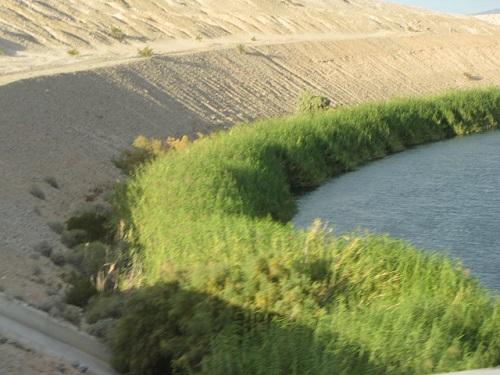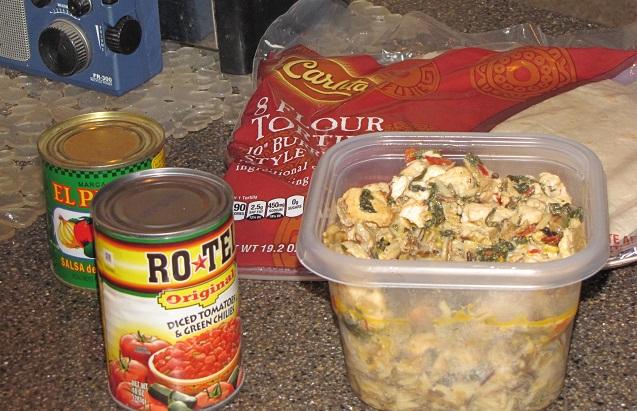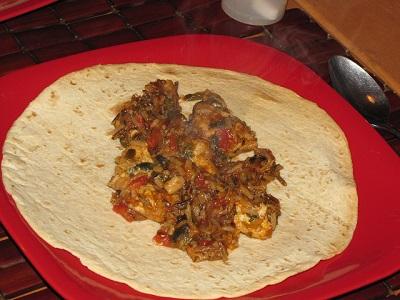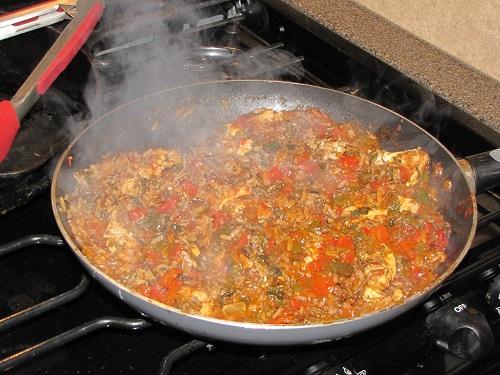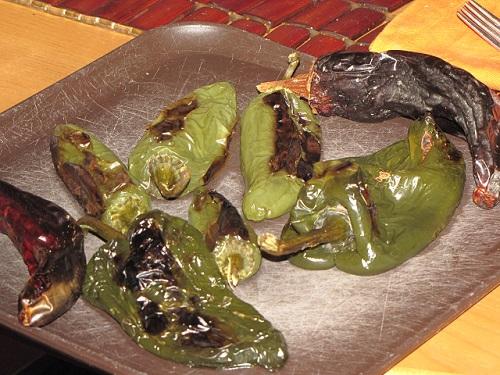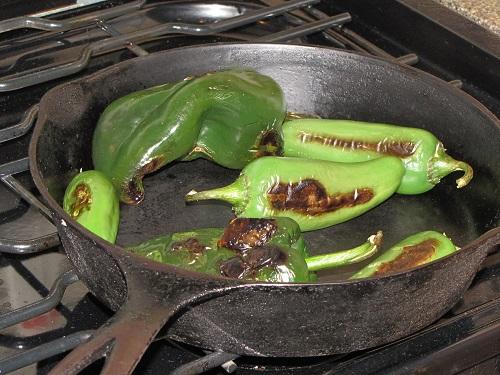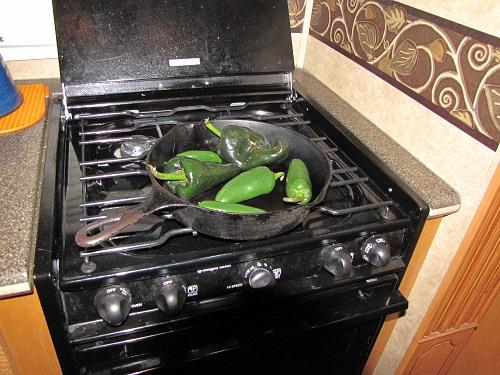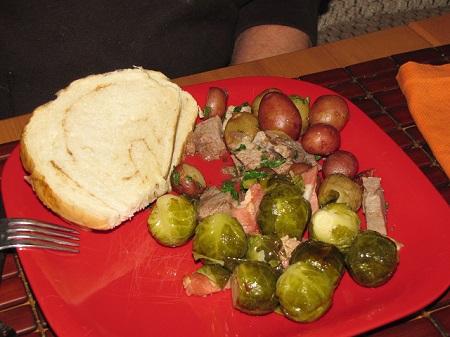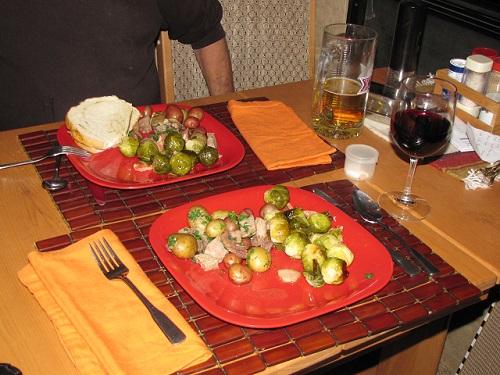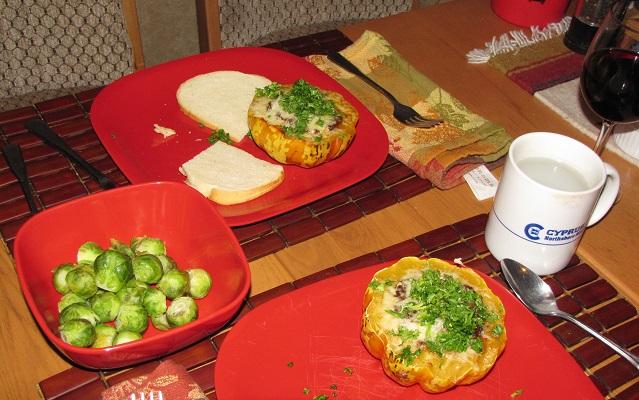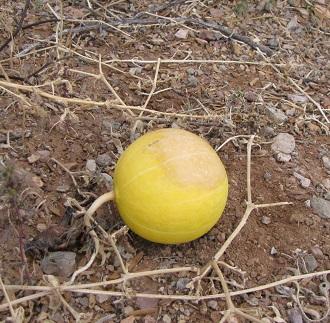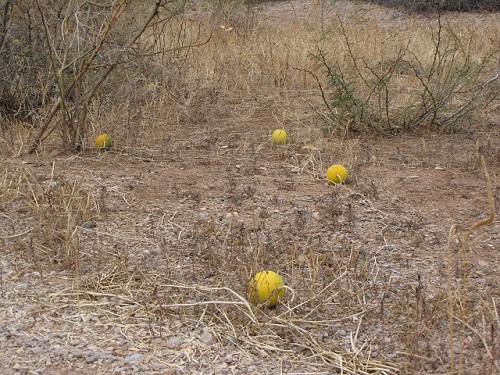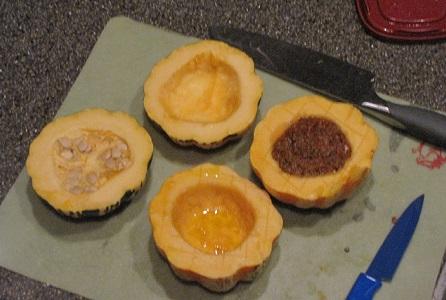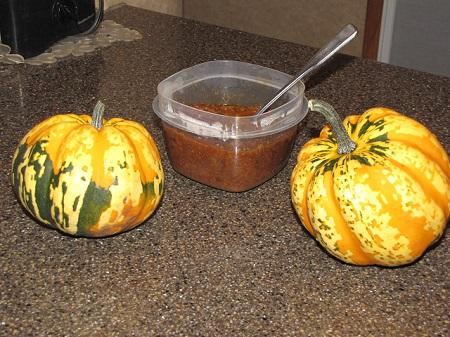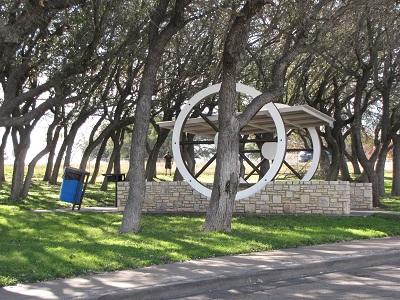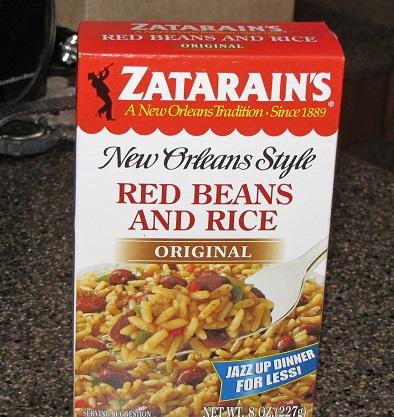-
Posts
13,754 -
Joined
-
Last visited
Content Type
Profiles
Forums
Store
Help Articles
Everything posted by Smithy
-
We waved goodby to the saguaro cactus that look like congregations of orators and celebrants, and the barrel cactus with their rosettes of "pears" that something eats - I don't know what - and moved westward. The desert has changed again, and water makes a more stark difference than ever before. Water districts out here make a point of saying, "Food Grows Where Water Flows". Wars have been fought, and may be again, over water. I grew up playing in irrigation ditches and taking canals for granted, and only in my teenaged years began to realize how different my local landscape would be without it. I wonder how many people actually think about where their water comes from, and how it relates to our food? Last night's meal was a rescued leftover. Sometime last week I'd tried to make chicken breast rollups with a filling of sweated onions and spinach and something else - I forget what. The whole roulade thing didn't work at all, and it turned into a very nonphotogenic meal of skillet chicken over a pilaf of wild rice and brown basmati. The flavor wasn't bad, but the whole thing was dry. Last night I gave the leftovers a Southwestern twist. We had bought chilies at the grocery store: poblano, jalapeno and a third type I've forgotten. I blistered them on the stove top, finished softening them in the oven, then peeled, deveined and chopped them. A couple of the "New Mexico Road Kill" red peppers went through the same toasting and chopping routine. The lot was added to the chicken/rice/tomato/sauce simmering in the skillet. The finished burritos didn't get photographed - perhaps we were too hungry - but the chicken, rice and peppers, along with sour cream and grated cheddar (decidly un-Mexican) showed that sometimes, leftovers can be better than the original. We're hunkered down, out of the 30 mph wind in a brake of trees. The weather forecast indicates that the wind will be dying later this week, so perhaps we'll be able to cook over an open fire. For right now, we're grateful to be in a snug trailer.
-
We've been working on leftovers lately. One aspect of my cooking is that I almost always make more than we need for a given meal, and we usually eat lightly at breakfast and lunch. Occasionally some small bit of leftover pork roast and sauerkraut may call so strongly that one of us pulls it furtively from the refrigerator at an off-time, without even offering to share. The smoked prime rib from Thanksgiving gave us 2 good full meals, with some to spare. Two nights ago it was time to use more. I had the wonderful beef gel from the original roasting. I had prime rib begging to be cut into chunks. I had baby potatoes. Chopped parsley. The only thing to do in addition was to braise brussels sprouts with bacon, and that's what I did. Voila, dinner in our last night in Tucson:
-
Yeah, I, too, wonder how much I'd use it and what I could use in it's place for whatever I might use it for. I bought a cheapo plastic mandoline at some grocery store, for about $8, to see whether I'd use it enough to justify a better one. So far, this one has done well enough: for the occasional gratin or other times when I want very uniform slices, it's good. I might someday spend $40 on a good one, but not until this one dies.
-
I don't see anything wrong the storage method, either, but I wonder whether the vacuum sealing is necessary, given that it will be kept in the refrigerator. Assuming you do vacuum seal it, how will you pull a vacuum without getting liquid into the seal? (Note, I haven't played with vacuum packers at all, so the answer may be obvious to experienced vacuum sealer users.) Congratulations on your batch!
-
I wish I *had* a dining room and dining room table. Alas, in our house there is none. In the family's houses where there were dining tables, they definitely weren't set with place mat until getting ready for a meal. At holiday times it was more likely to be a tablecloth and centerpiece; those were on for the duration with the possible exception of removing the centerpiece to make room for a smaller one, or dishes of food, at meal-time. Your description reminds me of the modern bedding sets complete with pillows in shams. The shams have to come off, or entirely different pillows are pulled out from some hidey-hole, at nighttime. Form over function: extravagance for its own sake?
-
When I was losing weight I did much better weighing-in just once a month....I found it too easy to get discouraged weighing every day. Have someone hide the scale. Weighing weekly - same time, same condition - did it for me. I felt like weighing every day was crazy-making, like watching the stock market and trying to make sense of it. ;=)
-
The Adobe Deli is about 8 miles east of Deming along NM 549 (turn right on Lewis Flats Road and go another mile) in what used to be a one-room school house. The owner began the deli when he moved from Brooklyn; looking around at the building, my darling commented that the chef is clearly "old-school". The place has a lot of attitude and funky atmosphere, and we've always enjoyed it in the past. We amused ourselves with the menu entries and the taxidermists' exhibits along every wall and on every shelf. Having said all that, I'll admit that this trip was a disappointment. We arrived hungry, after a hard day of doing town-type errands (including mountains of laundry). The bartender was excellent, and the selection of draft beers more than adequate. On the other hand the waiter seemed to be in over his head with no help; sometimes it took him so long to reappear after taking an order or going to ask a question that we wondered whether he was also the cook. There were also off-putting odors: mixed with good food smells were a strong smell of cigarette smoke and an even stronger smell of disinfectant. I hope they were just having an "off" day, and that this isn't the sign of decline. If this had been our first visit, it would have been our only visit. I was curious about the appetizers, and we split a plate of Santa Fe Shrimp: shrimp coated in cream cheese and roasted peppers, then breaded and deep fried. The cheese oozed messily and hotly from every bite, and was thick enough that my darling questioned whether any shrimp were involved. We could have settled for that as a meal, but were determined to pig out and order an entree each. We've had steaks there in the past, and they were good; this time, we settled for burgers, and they were excellent: juicy, done just as we'd asked, with almost all the condiments we'd ordered. (Someone forgot the bacon I requested on mine, but with roasted peppers and cheese it took me a while to miss it.) We had to ask for mayonnaise (the waiter wasn't sure there was any to be had!) and mustard. I think this time I've learned to avoid the house fries, though: they're wedges of potato, cut lengthwise into 8ths and fried; unfortunately they were soggy. I remember thinking the same thing last time. Note to self: avoid the "house spicy fried potatoes" in the future. My darling's onion rings were good. I took a picture of the shrimp, but unless I can get a photo editor working it isn't worth posting. I didn't keep any of the shots of the burgers. The place is very dimly lit, with candles at each table. I am reluctant to use a flash in a place where diners are enjoying quiet conversations, so settled for ambient light and a slow shutter, not anticipating the moody look that would result. It really doesn't look as sinister as this! Kinda looks like the animals are getting ready to pounce, doesn't it? The menu boasts a broad selection of steaks, ribs, fish (and other seafood), and poultry. They also offer, tongue in cheek, other fare: "Roadkill Rabbit Reuben (sandwich): Fresh off 549. Price TBD" "Big Foot: Rare find in the Florida mountains. Served the same way." "Your meal may not be what you expected, but it's what Van thought you damn well need. Visitors to the kitchen will be charged 20% extra." The next day was a travel day. We moved from Columbus, NM to Tucson, AZ; from Chihuahuan Desert with its scrubby creosote and arid landscape to Sonoran Desert, green and lush by comparison. Just don't get off the trail and into any of the dozens of varieties of cactus. Along the way we passed a lot of farmland: pecan orchards and pepper fields and cotton. At one lonely intersection we realized that the red things along the road were spillage from a truck hauling red peppers. Talk about picking up local ingredients! We stopped to collect some of the better spillage for our own use. A man who stopped to make sure we were all right said that yes, they'd come from the pepper farm down the road. He didn't know the variety, but said they weren't hot. So... anyone recognize this variety? Each pepper is 4 or 5 inches long. What are they good for? I did use some in last night's food, which was unremarkable in flavor and definitely not photo-worthy. They weren't hot. They are pretty.
-
That would be Rob! Might have trouble getting reservations as there have been some pretty significant write ups and folks are coming from all over the US and further to eat there. We ran into another camper a couple of days ago who lives in Silver City. I asked him about The Curious Kumquat. "Oh yes," he said, "I've been there a couple of times." He went on to make some comments that made it clear it isn't really his speed, and probably is mine. I'll have to try to get there!
-
That is very sad news. Her Zuni Cafe cookbook is one of my favorites. I'm sorry I never wrote, or emailed, and told her so.
-
James, we'll be eating at The Adobe Deli, http://adobedeli.com/, which is a few miles east of Deming. It's a funky steakhouse/ribhouse/burger joint built in what used to be the one-room school house. The place is decorated with stuffed animals of all types, ranging from alligator (they call it the Deligator) and various antelope to, I think there may even be a jackalope. Strung around the room is also various memorabilia: the first time we went, we were greeted by a full-size free-standing photo of Henry Fonda as Tom Joad (Grapes of Wrath). I think we've seen Marilyn Monroe and John Wayne at various stages, too. Outside the building are a bunch of old farm implements, always good for speculation about what they used to do (sometimes we get answers). They get a little crazy with some of their presentations: one year I had marinated beef kabobs on skewers that must have been 2' long, arranged in some elaborate holder. It's way too much food, and fairly pricey, but we figure we're getting 2 meals for the price of one since we inevitably take some home. The way we found the Adobe Deli in the first place was about 8 years ago, when we were traveling on company business and staying in a hotel. When we asked the clerk where we could find a good steak house, she named one place in Deming (now I've forgotten what), then hesitated and said, "That's for fine dining. If you're adventurous and want a place with more attitude and just as good food, go to the Adobe Deli." We've managed to get there almost yearly ever since. We've bypassed Las Cruces every year, due to schedule pressures and/or weather, but I appreciate the suggestions as to good places to go. Bisbee is a fascinating place, isn't it? We have to stop at just about every mining operation, active or not, that we see. And yes, we'll probably go that way again.
-
Silver City isn't on our itinerary this trip, but I'll remember it for the next time we come through, presumably in the spring. Thanks for the suggestion.
-
Last night we arrived in Columbus, New Mexico: a small village that was raided by Pancho Villa's men in 1916, from which Black Jack Pershing launched a raid into Mexico after the Villistas. He never caught them, but he developed a lot of "new" technology (tanks, early jeeps) that because useful during WWI. Pancho Villa State Park has an excellent museum; across the way is another museum run by the local historical society. (The historical society's museum is particularly deadly to me, because they always stock books and I have yet to get out of there without buying another cookbook I tell myself it's for a good cause.) If you wander far afield you can find the rubbish heap where materials were bulldozed to make room for this park. I've found fragments of dishes labeled "USQMC" (United States Quarter Masters Corp), and other dishes with dates from the early 1900's. It's all been picked over so it's difficult to find anything intact, but it's fun to look anyway. Along the walk we saw ripe coyote gourds, which I seem to recall have some medicinal qualities but are otherwise inedible; the book I just checked says they're very bitter and can be toxic in large quantities. Nonetheless they're pretty at this time of year: unlikely-looking yellow balls, more or less the size of a large orange, lying on the ground or else draped from low mesquite shrubs. Columbus is an area with abundant birds; there are thousands of sandhill cranes nearby, and they clatter and clack and croak to each other as they fly in tangled skeins. You can hear them from at least a half mile away. I'd hoped to be able to show photos from one of the local restaurants, but Tres Salsas was locked up. Tomorrow we're planning a trip to Deming and one of our favorite restaurants. Tonight we feasted on an edible cousin of coyote gourd: carnival squash brought from home, cleaned, scored, drizzled with olive oil, filled with a meat sauce, then baked. The finished product was topped with grated parmesan and chopped parsley.
-
What a difference a few hundred miles make! From Texas Hill Country and its abundant oaks we moved westward; the grass turned yellow; juniper and yucca began to appear, and at last we saw mountains. The Davis Mountains arise in a most unlikely way from the Chihuahuan desert to around 8,000 feet, and the scenery and ecosystems to be found there are wildly different than at the lower elevations. On the north side of those mountains is Balmorhea with its waters and a state park that we'd never tried before. We'll be back. The cienega (wetland) at the park was interesting, but by the time we arrived we were far more interested in food. We enjoyed the scenery, then said "Zatarain's to the rescue!" Dinner was Zatarain's red beans and rice, with some andouille sausage chopped up into it. I didn't bother photographing the meal, but in case you don't know Zatarain's boxed mixes, here's what to look for. They also make a low-sodium version. One of the many lovely things about Texas is its picnic areas. Unless otherwise marked, you're allowed to stay there for 24 hours. I don't recall whether there's a prohibition against pitching a tent, but since we're in a trailer it's a moot point. We generally stop at one for lunch along the way: open out enough of the trailer to get at the refrigerator, and enjoy a salad. Many picnic areas are developed according to a theme, complete with information signage about the area in question; almost all have grills. Texans know how to picnic!
-
That was my experience. The design is successful enough that it may not be a big issue; nonetheless I wouldn't be inclined to try it again. It seems to me that unless the blades are perfectly sharp and perfectly aligned, there will either be a gap that does not cut at all, or a buildup of material ahead of the blades that jams in the notch.
-
That larger Benriner looks nice. I keep thinking that a slanted blade would get a better cut than a straight-across blade, but I haven't tested to see whether that's true. Any thoughts on that? Rotuts is right that the mandoline Shel posted about originally looks like a knockoff of the Williams-Sonoma version; on the other hand, the Williams-Sonoma version is pricey, pricey, pricey. Is any mandoline worth that much any more? I tried the Oxo V-cut mandoline one time and took it back. I found that the V-shaped blade made a pinch point and was forever getting jammed with stuff that prevented a good cut. A lot of people seem to like it, but I wouldn't have one.
-
They are made with a different glass than the older Pyrex and there have been numerous reports of the dishes shattering. The packaging label on the new dishes STRONGLY caution about the glass shattering. IOW, new Pyrex ain't as good as the older glass and dishes, IMHO. http://www.snopes.com/food/warnings/pyrex.asp http://www.techfragments.com/1608/exploding-pyrex-cookware/ Darn, now I wish I hadn't let all my mother's Pyrex baking dishes go this last summer! Someone else will get good use out of them, though. Thanks for the information and the links.
-
It would be nice to be able to inspect the blade assembly first, but since this is mail order, an inspection of the return policy might be in order instead. It does look like a nice mandoline at a good price...enough so that it tempts me...however, I'm still doing well with the cheap plastic gizmo I bought some years back, so I think I can resist this temptation.
-
Any of those materials would be fine, and I have them all in some form or other. I personally like the extra flexibility that an enameled cast-iron pan can give, especially if it comes with a good, tight cover; it can also be a good braiser and you can add liquid during cooking without worrying about breaking it. (I realize that Corningware is similarly shockproof, but the glass and ceramic dishes require a little more caution.) In addition, enameled cast iron gives a bit more even heat, in my experience. What's wrong with the new Pyrex baking dishes?
-
I was referring to the seeds contained in the greenish pods. I have no experience with black cardamom. ltimmis80 will have to answer your question separately; now that you mention it, I'm not certain which type she meant.
-
Cardamom is an amazing spice: used by Scandinavians in baked goods, used in Indian curries. Hmm, maybe I'll try a little cardamom next time I'm cooking chicken.
-
i recently made my first batch of ricotta. The curdling agent was plain white vinegar, instead of citric acid or rennet. (Temperature was also important.) I actually found myself wondering whether it would have had more character if I'd used citric acid instead, possibly a more flavored vinegar like white wine vinegar. YMMV.
-
I've had Nancy Silverton's Breads from La Brea Bakery for years, but have not made a serious attempt at following her methods; the last time I tried, I was still working 2 jobs and much too scattered. Now my attention may be scattered by too many projects, but I can at least start thinking about using the book again. Unfortunately, it's at home and I'm on the road at present. It'll be there when I get back to it. Thanks for the recommendations on Ed Woods' books, and the source Sourdoughs International.
-
Toasting the wild rice...I've never thought of that before. Sounds like a great idea.
-
That does sound tasty. Thanks for the tip!
-
Thank you! We're headed west toward the Big Bend country, where coverage is spotty. Posting may be difficult for a few days.



